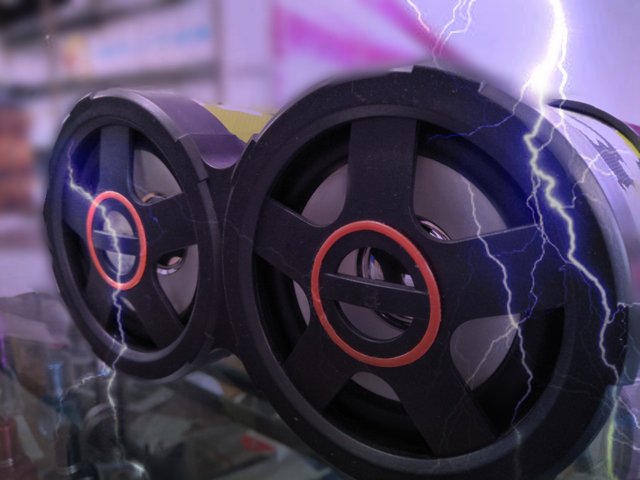
Understanding Speakers and Principles of Work - We can listen to radio music, listen to sounds from television dramas or sounds from the other person on the phone, all this because of the electronic components called Loudspeaker which in Indonesian called Speaker. Loudspeaker or more often abbreviated as Speaker is a Transducer that can convert electrical signals into Audio Frequency (sound signal) that can be heard by human ear by way of membrane membrane components in Speaker so that sound waves occur.
Also read: Understanding Transducers and their Types.
How Sound can be generated?
Before we discuss further about Loadspeaker (Speaker), we should know how the sound can be generated. What is meant by "Voice" is actually the Frequency that can be heard by the Human Ear that is the frequency ranging between 20Hz - 20.000Hz. The incidence of sound due to the fluctuation of air pressure caused by movement or vibration of a particular object. When the object is moving or vibrating, the object will send Kinetic Energy to the surrounding air particles. It can be anologized like a wave on water. While the meaning of Frequency is the number of vibrations that occur within a period of one second. Frequency is influenced by the velocity of vibration on the object that causes the sound, the faster the vibration the higher the frequency also.
Working Principles Speaker
In the picture above, we can see that basically Speaker consists of several main components namely Cone, Suspension, Permanent Magnet, Voice Coil and Frame Speaker.
In order to translate electrical signals into audible sounds, Speakers have an Electromagnetic component that consists of a coil called the Voice Coil to generate a magnetic field and interact with the Permanent Magnet so as to move the Cone Speaker forward and backward. The Voice Coil is the moving part whereas the Permanent Magnet is the Speaker part that stays in its position. Electrical signals passing through the Voice Coil will cause the direction of the magnetic field to change rapidly resulting in "pull" and "repulse" movements with the Permanent Magnet. Thus, there is a forward and backward vibration in the Cone Speaker.
Cone is the main component of the moving Speaker. In principle, the greater the Cone the greater the surface that can move the air so that the sound produced Speaker will also be greater.
The suspension contained in the Speaker serves to pull the Cone to its original position after moving forward and backward. Suspension also functions as a holder of Cone and Voice Coil. Stiffness (rigidity), composition and design Suspension greatly affect the sound quality of the Speaker itself.
Symbols and Forms of Speakers
The following are the Symbols and forms of the Loudspeaker (Speaker):

Types of Speakers
Based on the resulting Frequency, Speaker can be divided into:
Speaker Tweeter, a speaker that produces High Frequency (about 2kHz - 20kHz) Mid-range speakers, ie speakers that produce a Medium Frequency (about 300Hz - 5kHz) Woofer Speaker, ie speakers that produce Low Frequency (about 40Hz - 1kHz) Speaker Sub- woofer, which speakers that produce very low Frequency is around 20Hz - 200Hz.Speeder Full Range, which speakers that can produce Low Frequency to High Frequency.
Based on the function and shape, Speaker can also be divided into:
Speaker CorongSpeaker Hi-fiSpeaker HandphoneHeadphoneEarphoneSpeaker TelevisionSpeaker Sound System (Home Theater) Laptop Speaker
Understanding Active Speaker and Passive Speaker
Speakers used for Sound System Entertainment in general can be divided into 2 categories, namely Passive Speaker and Active Speaker. The following is a brief explanation of both types of Speakers.
Passive Speaker
Passive Speaker is a Speaker that does not have Amplifier (amplifier) in it. So Passive Speaker requires additional Amplifier to be able to move it. The signal level must be amplified first in order to move the Passive Speaker. Most of the Speakers we meet are Passive Speakers. Active Speaker (Active Speaker)
Active Speaker is a Speaker that has Amplifier (amplifier) in it. Active Speakers require an additional power cord to turn on the Amplifier contained therein.